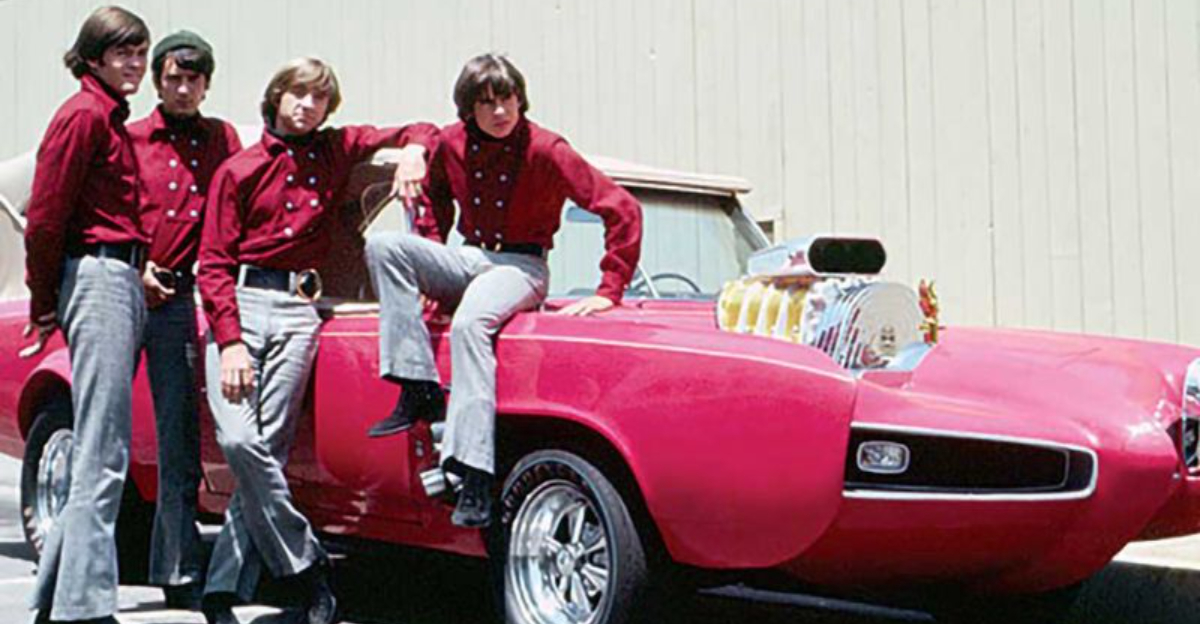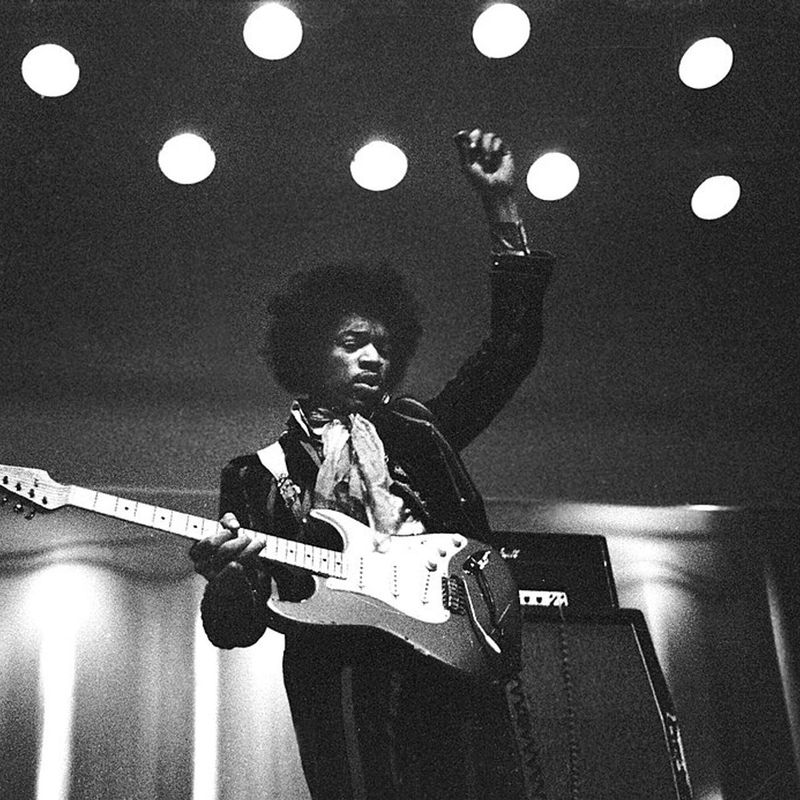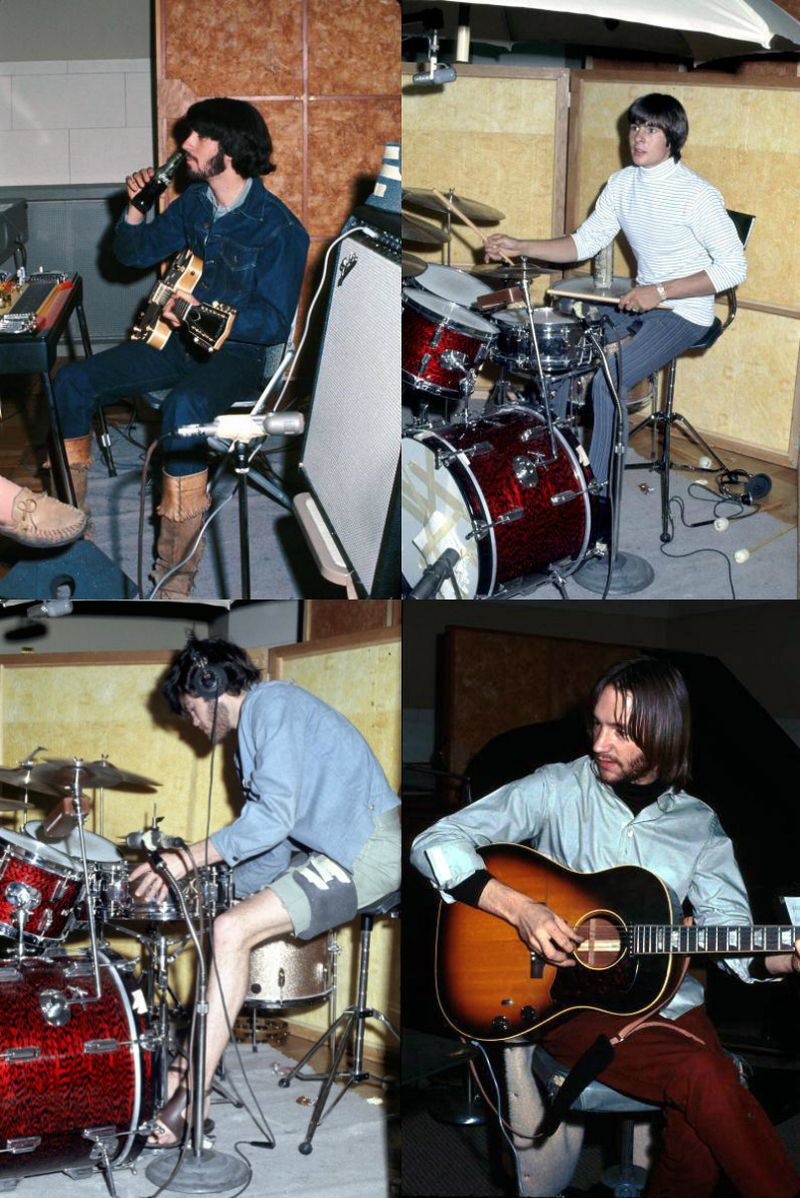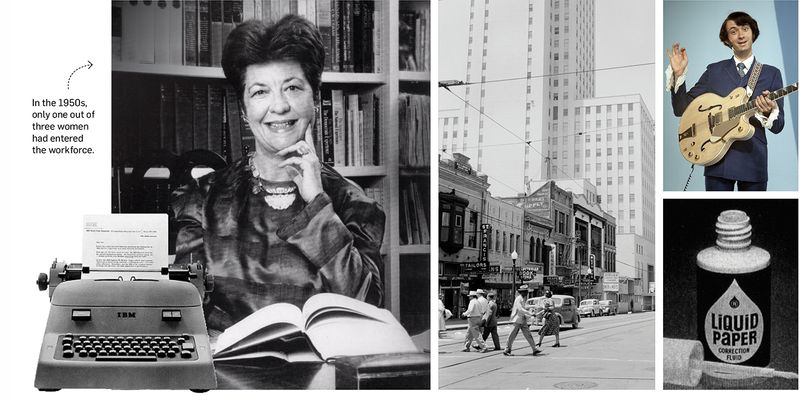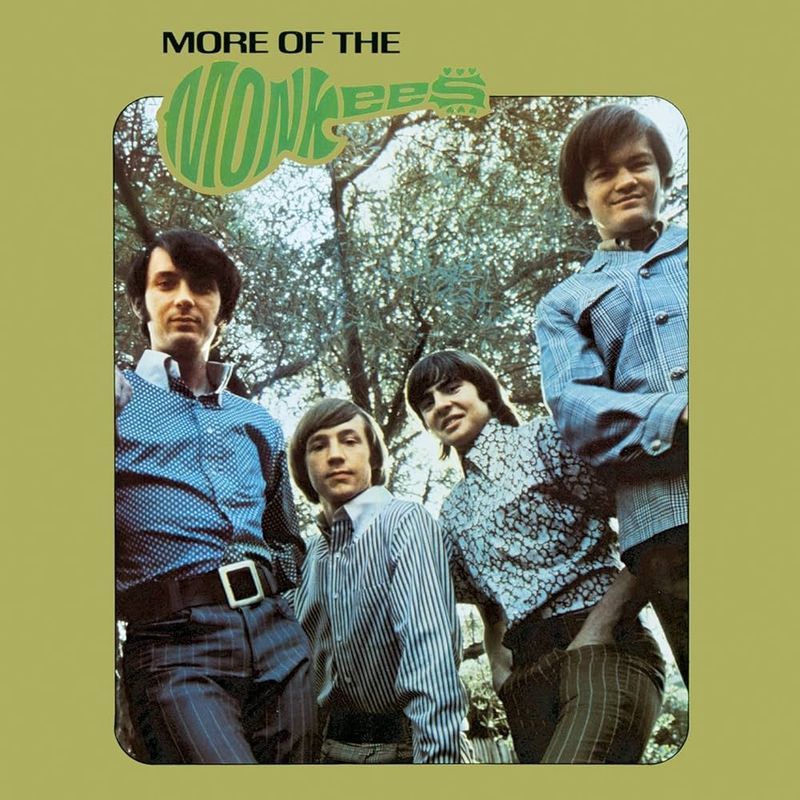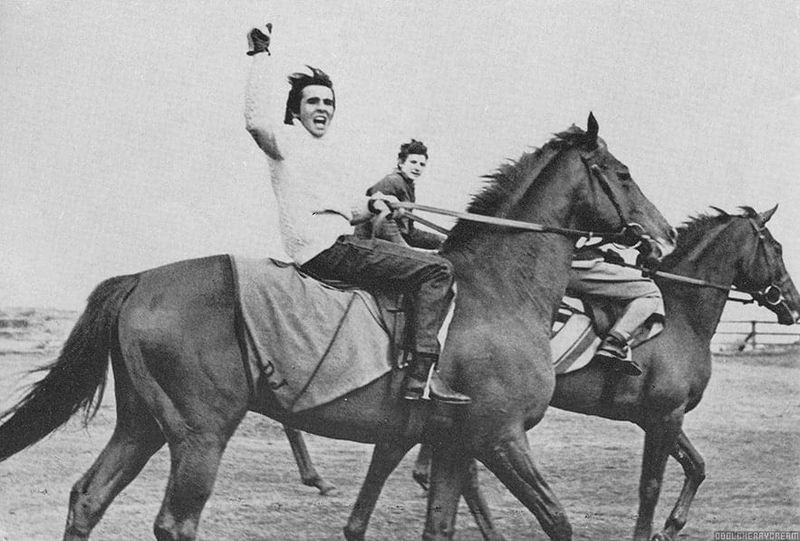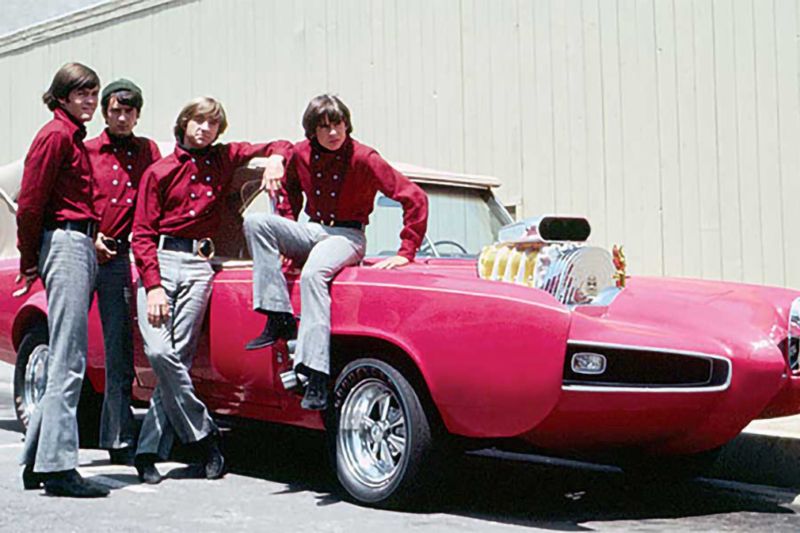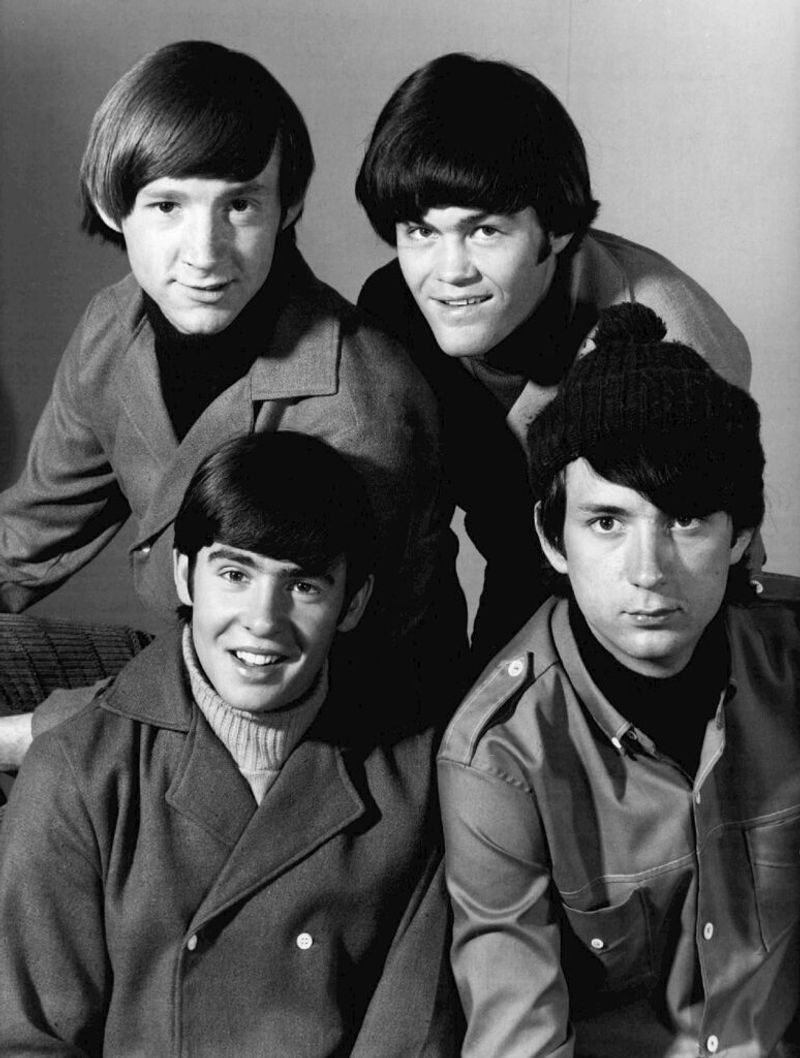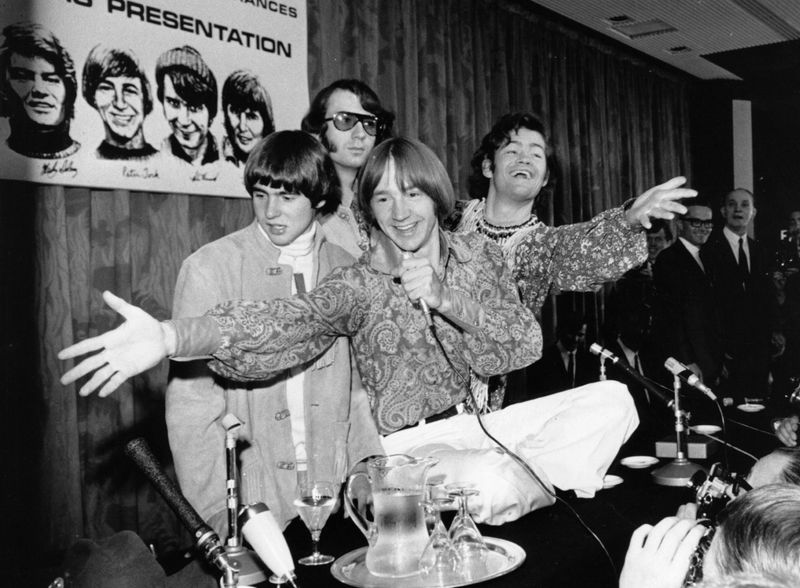Back in the 1960s, The Monkees started as a made-for-TV band that many music fans dismissed as fake. Created to cash in on Beatlemania, they were seen as a silly imitation rather than serious musicians.
But something unexpected happened – this ‘manufactured’ group became wildly popular, eventually selling more records than The Beatles themselves in 1967.
Their journey from TV gimmick to legitimate musical force is one of pop music’s most surprising success stories.
1. Cast Like Sitcom Stars—Not Musicians
Four young men answered a newspaper ad seeking “4 insane boys” for a new TV show. Davy Jones, Peter Tork, Micky Dolenz, and Michael Nesmith had varying musical backgrounds, but were hired primarily as actors. The producers wanted attractive personalities who could play zany characters on screen.
Only Nesmith and Tork had serious musical training initially. Dolenz learned to play drums specifically for the show! The casting process resembled how sitcoms find their stars, not how bands form organically.
This unusual beginning made many dismiss them as mere Beatles copycats rather than legitimate artists.
2. Jimi Hendrix’s Bizarre Opening Act Stint
Guitar legend Jimi Hendrix briefly toured as The Monkees’ opening act in 1967, creating one of music’s strangest pairings. Picture screaming teenage girls waiting for bubblegum pop songs while Hendrix set his guitar on fire and played with his teeth!
Micky Dolenz had seen Hendrix perform at the Monterey Pop Festival and pushed for him to join their tour. The experiment lasted only seven shows before Hendrix departed, reportedly after giving the middle finger to the audience during a performance in Forest Hills, New York.
Despite the mismatch, the Monkees themselves greatly admired Hendrix’s revolutionary talent.
3. The Battle for Creative Independence
Frustrated by their puppet-like status, The Monkees staged a rebellion against their producers. Early recordings featured them only on vocals while session musicians (including members of the famous Wrecking Crew) played all instruments. This arrangement infuriated the band, especially the musically skilled Nesmith and Tork.
Their determination paid off with the album “Headquarters” (1967), where they finally played their own instruments and wrote much of the material. This musical declaration of independence reached #1 on the charts before being displaced by The Beatles’ “Sgt. Pepper.”
Their fight transformed them from TV characters into a genuine band.
4. Nesmith’s Liquid Paper Fortune
While most musicians struggled financially, Michael Nesmith had a secret safety net. His mother, Bette Nesmith Graham, invented Liquid Paper correction fluid after noticing how artists used paint to cover mistakes. Starting in her kitchen, she built a multi-million dollar company.
When she sold to Gillette for $47.5 million in 1979, Michael inherited substantial wealth. This financial freedom allowed him to pursue experimental music and video projects without commercial pressure.
Ironically, the “manufactured” pop star’s mother created her fortune through genuine innovation, giving her son independence that many “authentic” musicians never experienced.
5. Record-Breaking Sales Triumph
The music industry was stunned in 1967 when The Monkees achieved something extraordinary – outselling both The Beatles and Rolling Stones combined! Their albums dominated the Billboard charts for over half the year.
“More of The Monkees” became the fastest-selling album in history at that point, spending 70 weeks on the charts. Meanwhile, “Headquarters” followed with its own impressive run. Their singles were equally dominant, with “I’m a Believer” selling over 10 million copies worldwide.
Even as critics dismissed them, American teenagers were voting with their wallets, making the prefabricated band into legitimate pop culture titans.
6. Jack Nicholson’s Psychedelic Film Experiment
Few remember that future Oscar-winner Jack Nicholson co-wrote the Monkees’ bizarre movie “Head” (1968). This surreal film intentionally shattered their clean-cut image with anti-war messages, drug references, and fourth-wall-breaking scenes criticizing their own commercial origins.
Nicholson and director Bob Rafelson created the concept during an LSD-fueled weekend in the desert. The resulting film confused teenage fans and bombed at the box office, but later gained cult status for its experimental style.
Victor Mature, Frank Zappa, and Sonny Liston made strange cameos in this deliberately non-commercial project that marked the beginning of the band’s rebellion against their manufactured image.
7. Davy Jones: From Horse Racing to Heartthrob
Before winning teen hearts across America, Davy Jones pursued a completely different career – as a jockey in his native England. Standing just 5’3″ tall, his compact frame was perfect for horse racing. Young Jones even trained for the Grand National, one of racing’s most prestigious events.
His path changed when he landed a role in the musical “Oliver!” on Broadway. The Ed Sullivan Show featured the cast the same night The Beatles made their American debut – a fateful coincidence that inspired Jones to shift from racing to entertainment.
Throughout his life, horses remained his passion. He owned racehorses and occasionally rode in celebrity races even during The Monkees’ heyday.
8. Music Video Pioneers Before MTV Existed
Long before MTV revolutionized music consumption, The Monkees were already perfecting the music video format. Their TV show essentially created a new visual language for pop music that wouldn’t become mainstream until decades later.
Each episode featured quick cuts, surreal comedy bits, and innovative camera techniques that directly influenced future music video aesthetics. The show’s segments showing the band performing in unusual locations or fantastical scenarios established templates still used today.
When MTV launched in 1981, many of its early executives cited The Monkees as a major influence. The band’s pioneering visual approach to music helped bridge the gap between traditional TV and the coming video revolution.
9. Rock Hall of Fame’s Controversial Exclusion
Despite selling over 75 million records worldwide and influencing generations of artists, The Monkees remain conspicuously absent from the Rock & Roll Hall of Fame. Many critics and music historians point to this exclusion as evidence of the institution’s bias against so-called “manufactured” acts.
Jann Wenner, Rolling Stone founder and Hall of Fame co-founder, reportedly held a long-standing prejudice against the group. Meanwhile, numerous artists with less commercial and cultural impact have been inducted.
The snub persists despite vocal support from other Hall members like Michael Stipe of R.E.M., who cited The Monkees as a major influence on his own musical development.
10. Hitmakers Behind Their Greatest Songs
Many music fans don’t realize The Monkees’ biggest hits were penned by some of the greatest songwriters in pop history. Neil Diamond wrote “I’m a Believer,” which spent seven weeks at #1 and became one of the biggest-selling singles of all time.
Husband-wife team Carole King and Gerry Goffin created the counterculture-tinged “Pleasant Valley Sunday,” while Tommy Boyce and Bobby Hart crafted their theme song and several early hits. These songwriting legends saw potential in the group beyond their TV personas.
Eventually, the band members themselves began writing excellent material, with Michael Nesmith penning country-rock classics like “Listen to the Band” that influenced the emerging genre.
